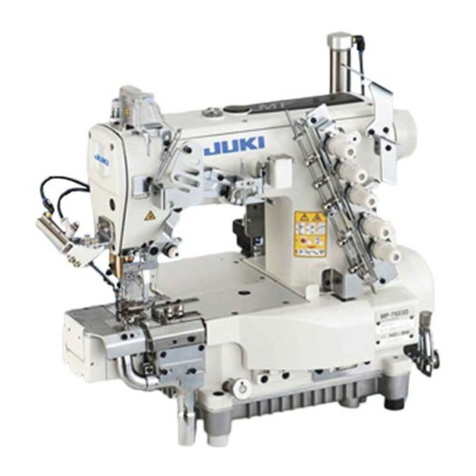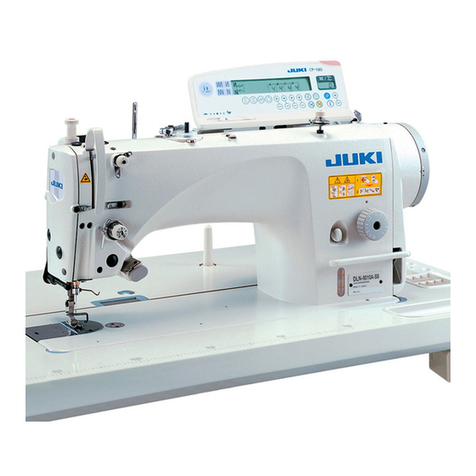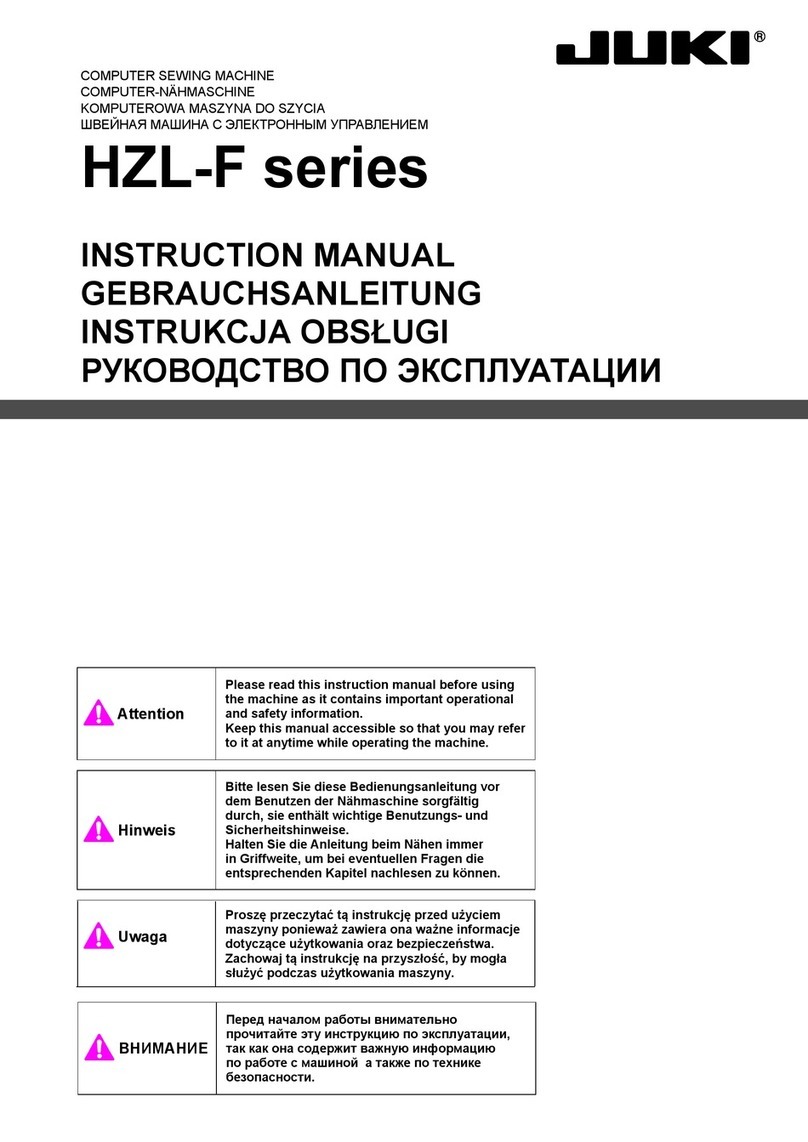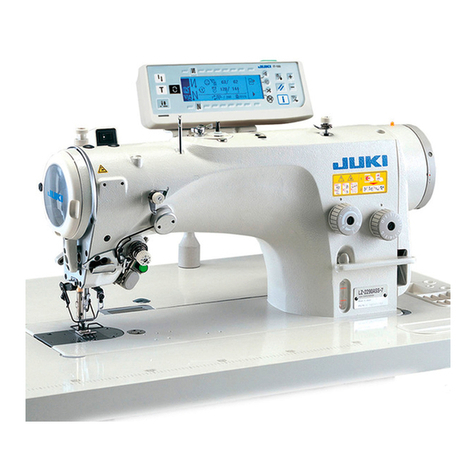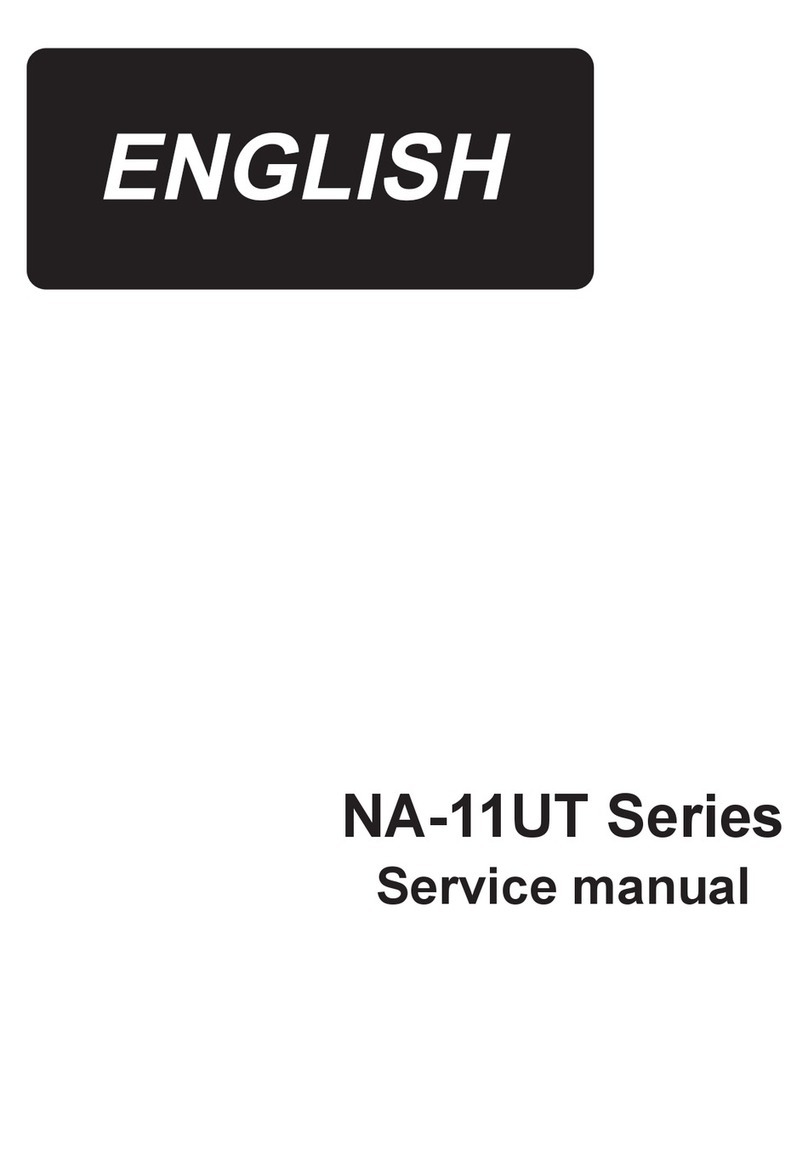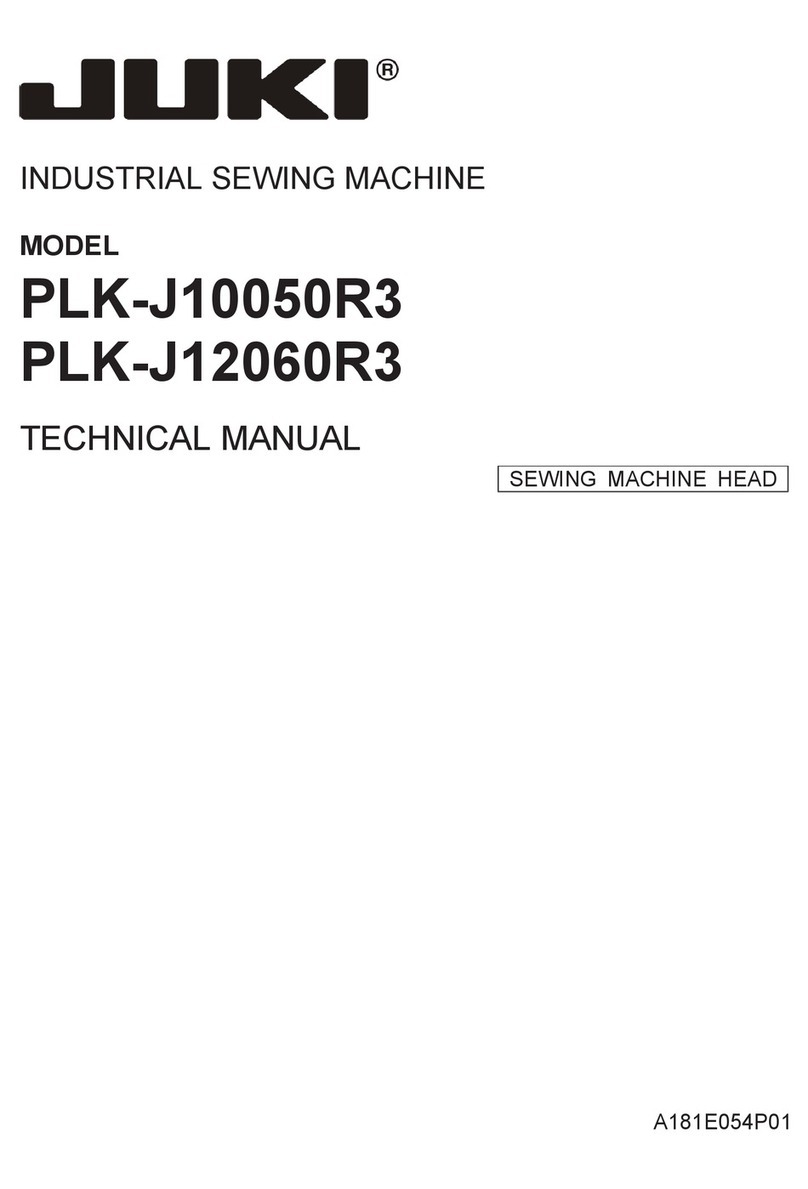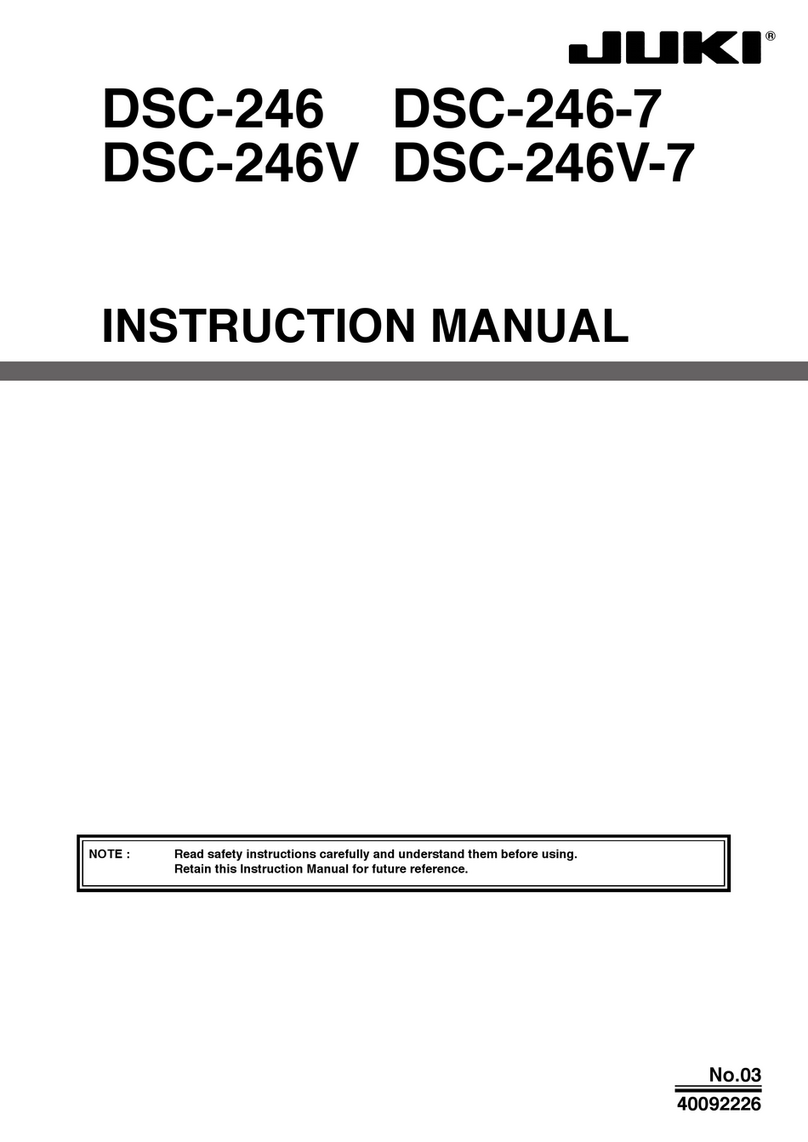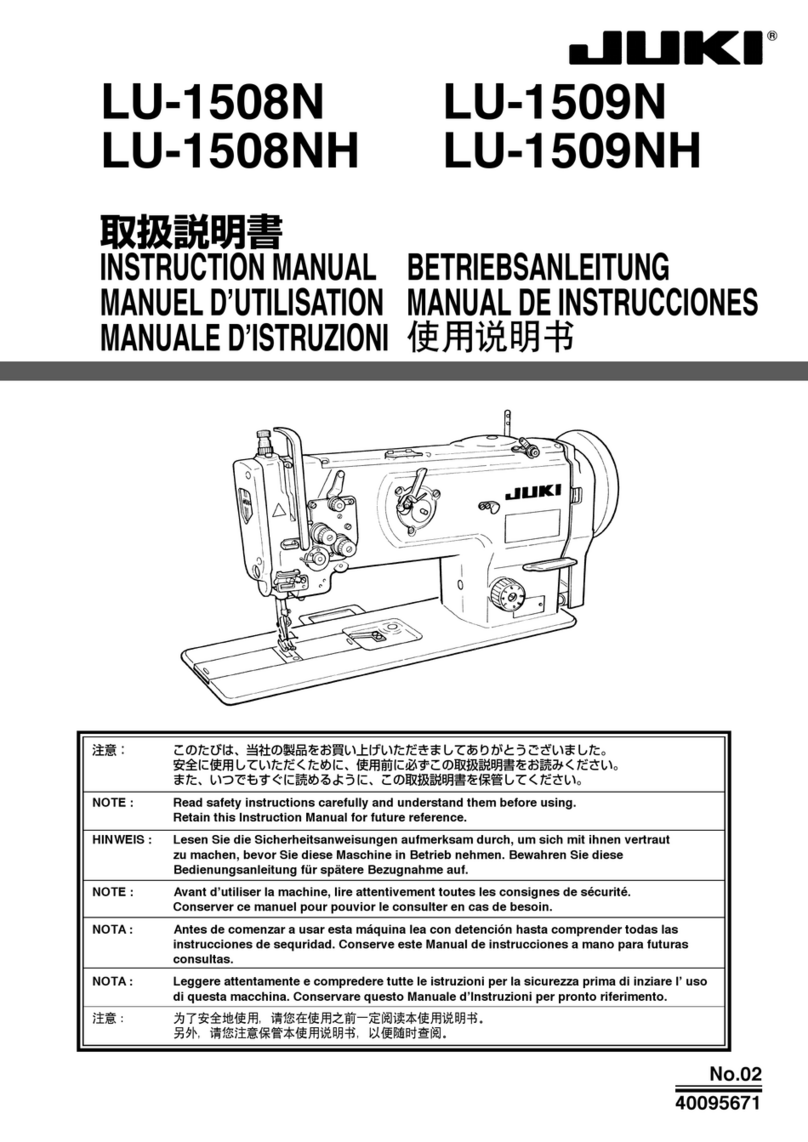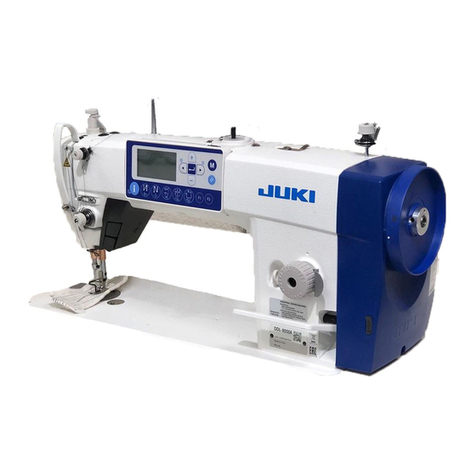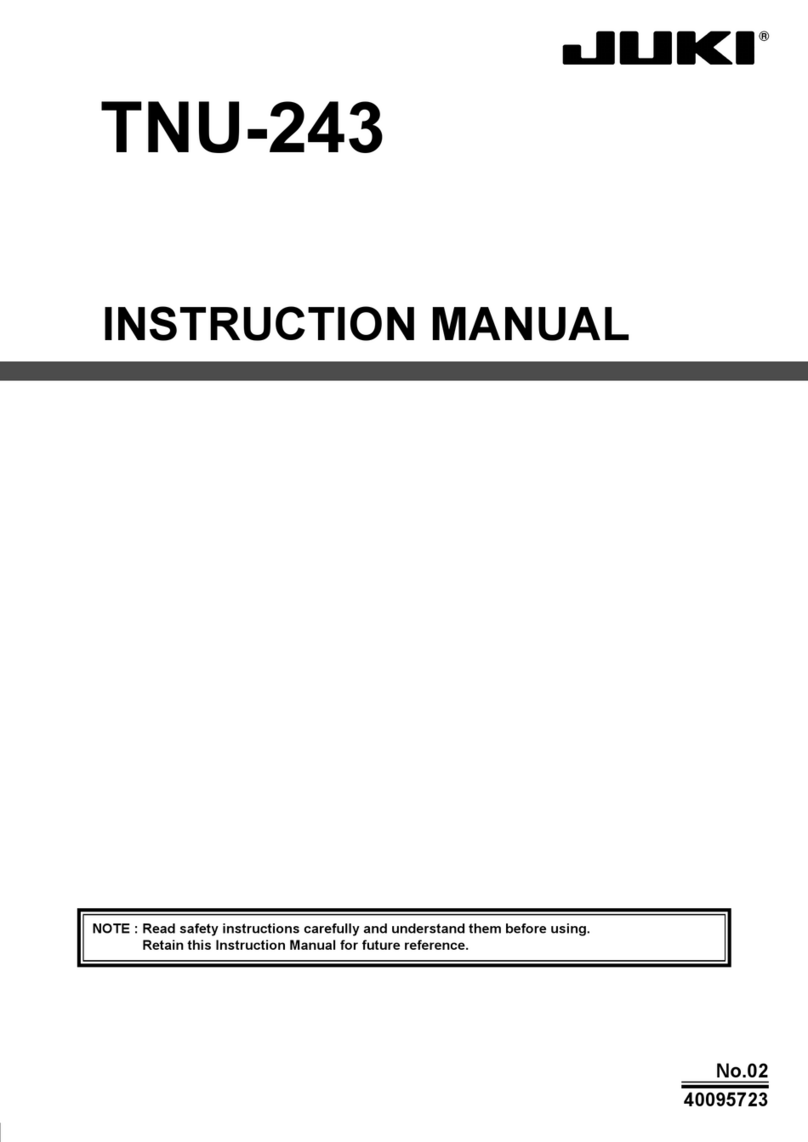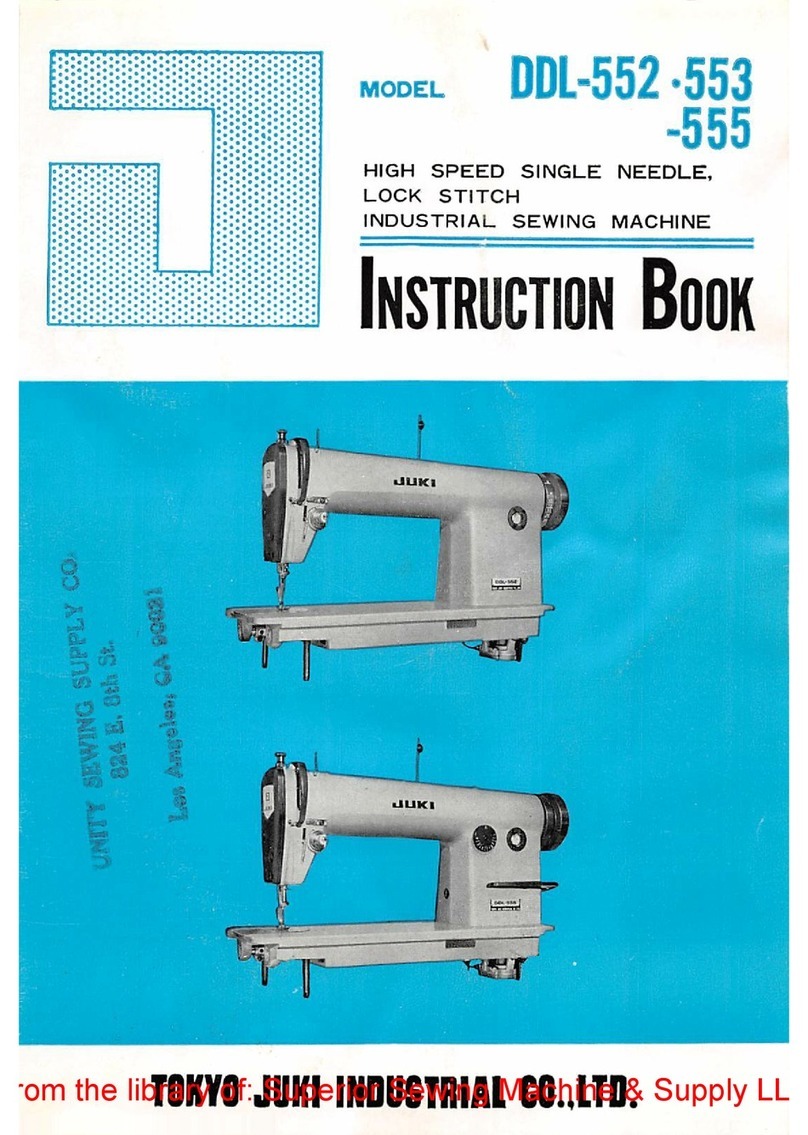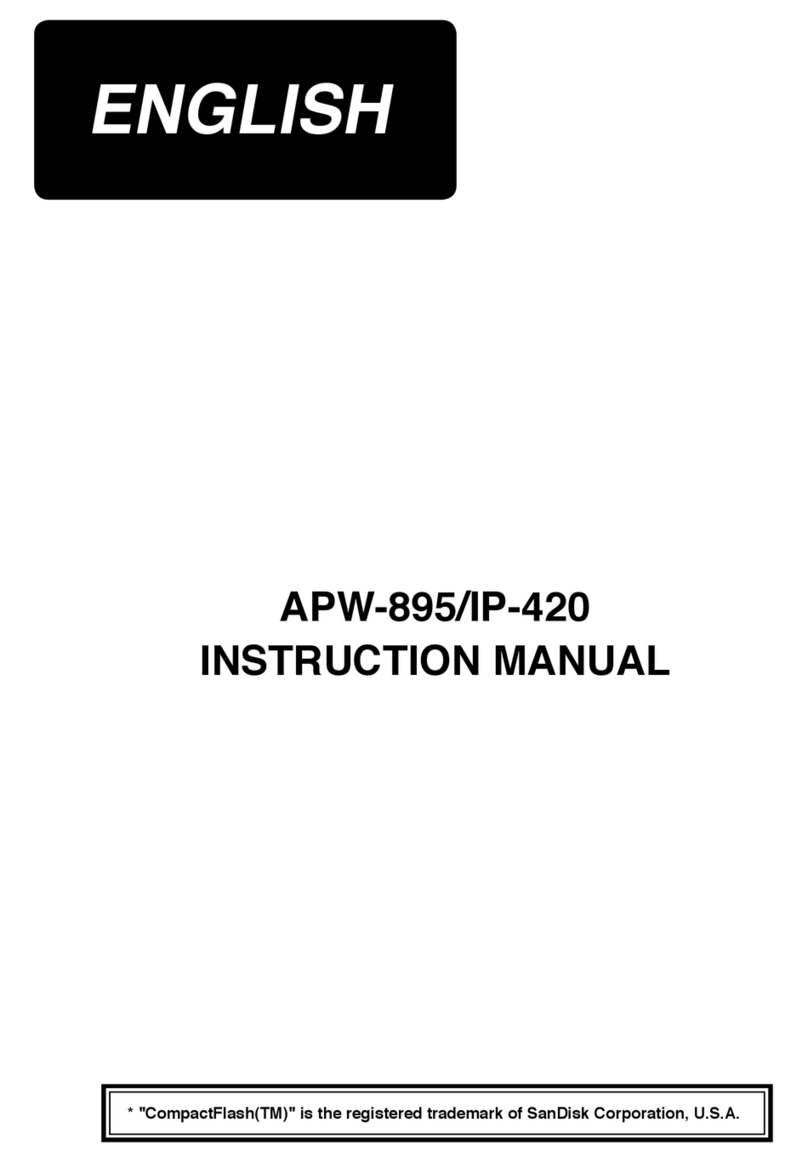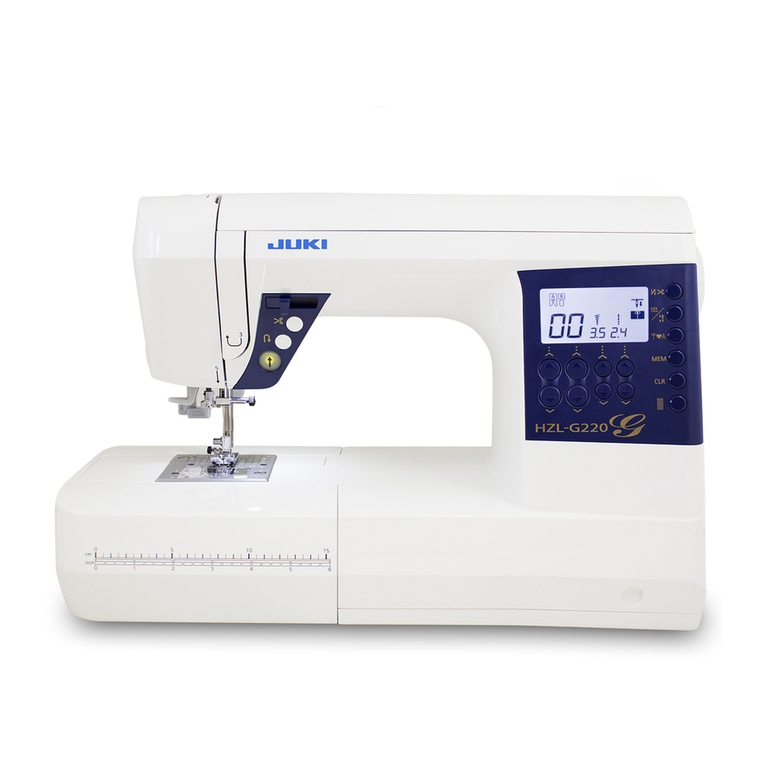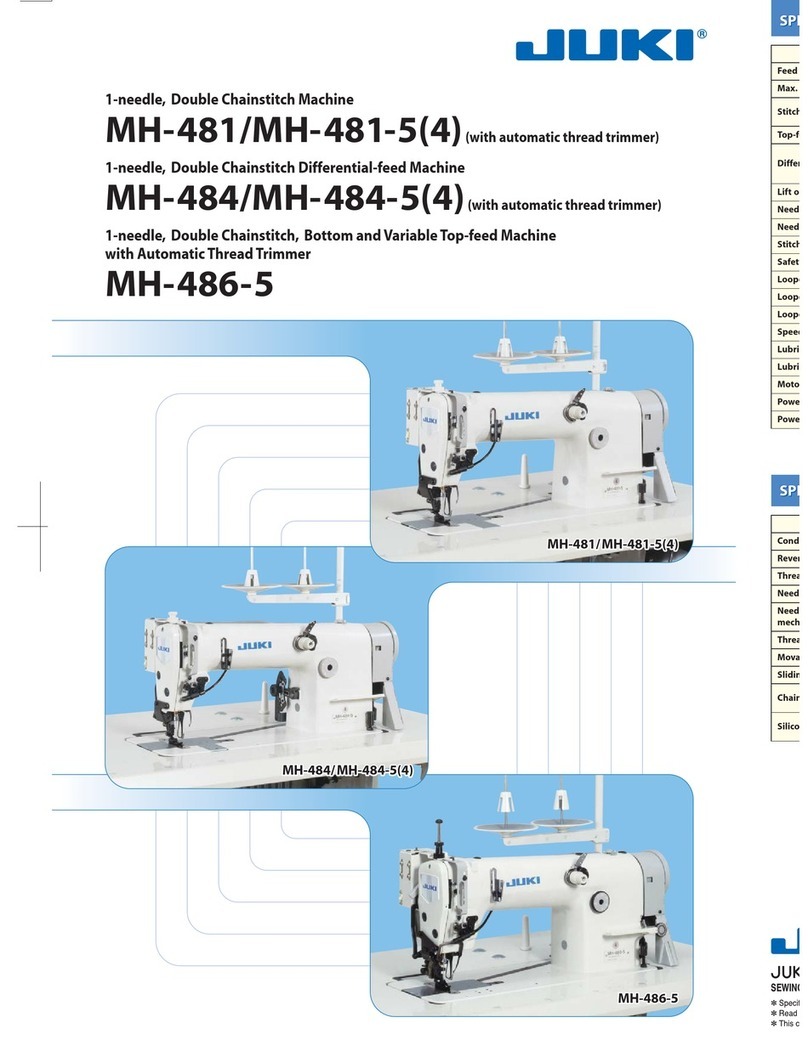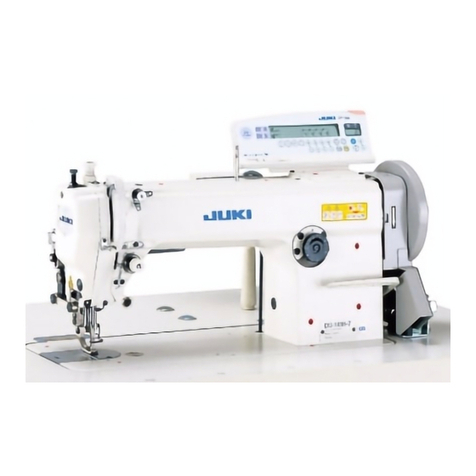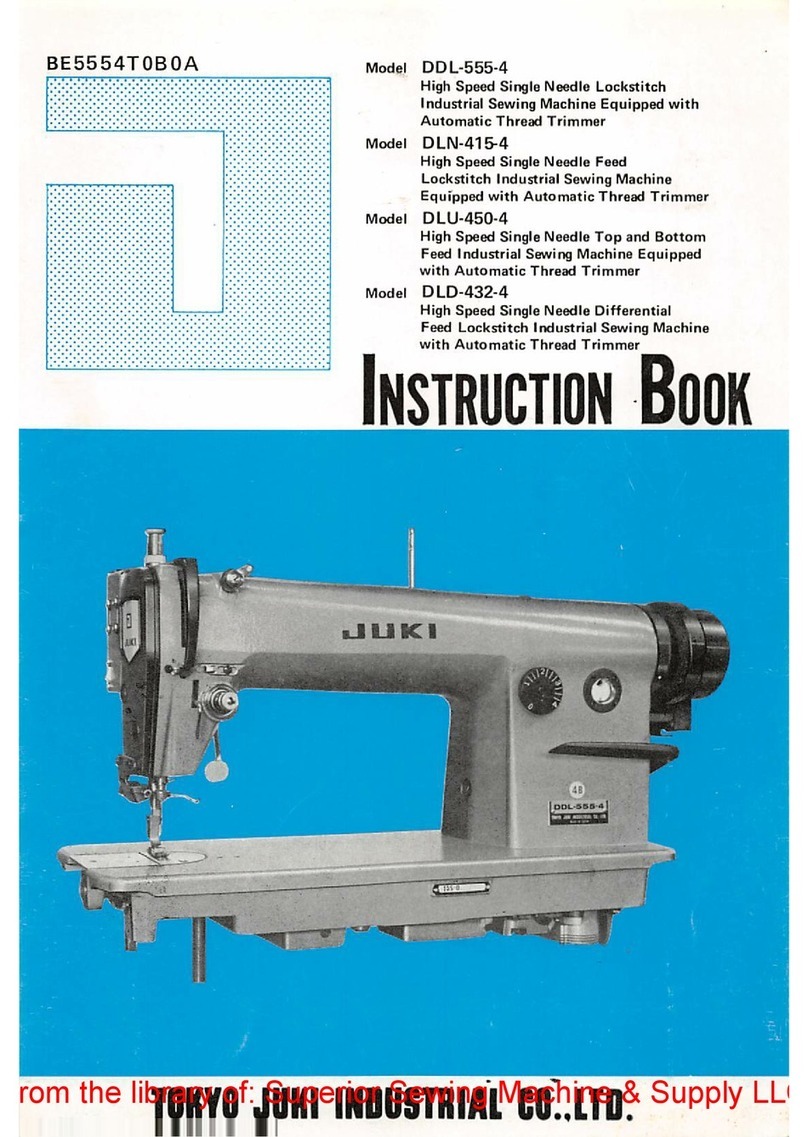
ii
(2) When performing winding bobbin thread only ............................................................................35
2-12.Using counter ............................................................................................................ 35
(1) Setting procedure of the counter ................................................................................................35
(2) Count-up releasing procedure ....................................................................................................37
(3) How to change the counter value during sewing........................................................................ 38
2-13.Performing new register of users’ pattern .............................................................. 38
2-14.Naming users’ pattern............................................................................................... 39
2-15.Performing new register of pattern button ............................................................. 40
2-16.LCD display section at the time of pattern button selection................................. 41
(1) Pattern button data input screen ................................................................................................41
(2) Sewing screen ............................................................................................................................43
2-17.Performing pattern button No. selection................................................................. 45
(1) Selection from the data input screen ..........................................................................................45
(2) Selection by means of the shortcut button .................................................................................46
2-18.Changing contents of pattern button ...................................................................... 47
2-19.Copying pattern button............................................................................................. 48
2-20.Changing sewing mode ............................................................................................ 49
2-21.LCD display section at the time of combination sewing ....................................... 50
(1) Pattern input screen ...................................................................................................................50
(2) Sewing screen ............................................................................................................................52
2-22.Performing combination sewing.............................................................................. 54
(1) Selection of combination data ....................................................................................................54
(2) How to edit combination data .....................................................................................................55
(3) Deleting procedure of the combination data............................................................................... 56
(4) Deleting procedure of the step of the combination data .............................................................56
2-23.Changing memory switch data ................................................................................ 57
2-24.Using information...................................................................................................... 58
(1) Observing the maintenance and inspection information.............................................................58
(2) Releasing procedure of the warning........................................................................................... 59
(3) Observing the production control information............................................................................. 60
(4) Performing setting of the production control information ............................................................61
(5) Observing the working measurement information ......................................................................63
2-25.Using communication function................................................................................ 65
(1) Handling possible data ...............................................................................................................65
(2) Performing communication by using the media..........................................................................66
(3) Performing communication by using RS-232C...........................................................................66
(4) Take-in of the data ......................................................................................................................66
(5) Taking in plural data together...................................................................................................... 67
2-26.Performing formatting of the media ........................................................................ 69
2-27.Operation at the time of X/Y motor position slip .................................................... 70
(1) When the error is displayed during sewing.................................................................................70
(2) When the error is displayed after end of sewing ........................................................................71
(3) When the rest switch is not displayed ........................................................................................ 71
2-28. USING 2-STEP STROKE FUNCTION ....................................................................... 72
(1) Setting of 2-step stroke function .................................................................................................72
(2) Setting of 2-step stroke position .................................................................................................72
(3) Motion of 2-step stroke function .................................................................................................74
3. MEMORY SWITCH DATA LIST........................................................................................... 76
3-1. Data list....................................................................................................................... 76
3-2. Initial value list........................................................................................................... 82
